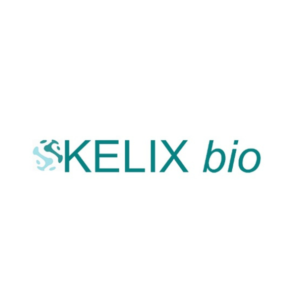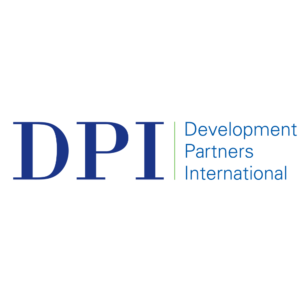OPIM Independent Verification Report 2023
Download the release
Introduction
As a signatory of the Operating Principles for Impact Management (the Impact Principles)1, Development Partners International (DPI) engaged BlueMark to undertake an independent verification of the alignment of DPI’s impact management (IM) system with the Impact Principles. DPI’s assets under management covered by the Impact Principles (Covered Assets) totals $891.3 million2, for the period ending June 30th 2023.
Summary assessment conclusions
BlueMark has independently verified DPI’s extent of alignment with the Impact Principles. Key takeaways from BlueMark’s
assessment are as follows:
Principle 1: DPI has a clearly defined impact strategy for ADP Fund III which is aligned with specific SDGs and focused on driving progress in portfolio companies in the areas of gender diversity, job growth & job quality, and climate change.
Principle 2: DPI utilises impact scores and a standard set of metrics to compare impact performance across investments and aggregate impact performance at the fund-level. To further align, DPI should consider aligning staff incentive systems with the impact performance of its investments.
Principle 3: DPI captures specific value-add opportunities for each investment in Impact and ESG Action Plans. To further improve, DPI should include the firm’s specific responsibilities in Impact Action Plans and build out the ‘Inputs’ section of case studies presented in annual impact reports.
Principle 4: DPI has a standard process for assessing the positive impact of prospective investments ex-ante. To further align, DPI should add more depth and specificity along its five dimensions of impact and more consistently assess negative and indirect impacts of investments.
Principle 5: DPI’s ESG Management System details a structured process for managing ESG risks, including preparing an ESG risk categorisation and a third party E&S report for each investment. In the monitoring stage, DPI collects ESG data from companies annually and tracks all ESG-related touchpoints in a portfolio company tracker file.
Principle 6: DPI collects a standardised set of impact metrics to monitor progress made towards the targets for its three impact themes. To improve, DPI should formalise its process to address impact underperformance and deploy stakeholder surveys across the rest of its portfolio.
Principle 7: DPI has a standard template for considering the sustainability of impact beyond exit. DPI should ensure that completed Exit Assessment Templates document actions taken by DPI to drive and embed impact in companies.
Principle 8: To further align, DPI should formalise its impact review process using standardized documentation. The firm should also develop a process for using review findings to make improvements to operational and management practices.
Assessment methodology and scope
DPI provided BlueMark with the relevant supporting documentation for the policies, processes, and tools related to the IM system applicable to the Covered Assets. The scope of BlueMark’s work was limited to processes in place related to the Covered Assets as of September 2023. BlueMark’s assessment of the IM system included an evaluation of both the system itself and supporting documentation, as well as the consistency of the draft disclosure statement with the IM system. BlueMark believes that the evidence obtained in the scope of its assessment is sufficient and appropriate to provide a basis for our conclusions. 3
BlueMark’s full assessment methodology, based on its professional judgment, consisted of:
- Assessment of the IM system in relation to the Impact Principles, using BlueMark’s proprietary rubric, and examining
processes and policies against the following criteria:
- Compliance of the IM system with a threshold level of practice;
- Quality of the IM system’s design in terms of its consistency and robustness; and
- Depth of sub-components of the system, focused on completeness
- Interviews with DPI staff responsible for defining and implementing the IM system;
- Testing of selected DPI transactions to check the application of the IM system; and
- Delivery of detailed assessment findings to DPI, outlining areas of strong alignment and recommended improvement, as well as BlueMark’s proprietary benchmark ratings on the extent of alignment to each of the Impact Principles.
Permissions
This statement, including our conclusions, has been prepared solely for DPI in accordance with the agreement between our firms, to assist DPI in fulfilling Principle 9 of the Operating Principles for Impact Management. We permit DPI to disclose this statement in its entirety online, or to furnish this statement to other interested parties to demonstrate DPI’s alignment with the Operating Principles for Impact Management. To the fullest extent permitted by law, we do not accept or assume responsibility to anyone other than DPI for our work or this statement except where terms are expressly agreed between us in writing.
About Blue Mark
BlueMark, a Tideline company, is a leading provider of impact verification services in the impact investing market. BlueMark was founded with a mission to “strengthen trust in impact investing” and to help bring more accountability to the impact investment process. BlueMark is a wholly owned subsidiary of Tideline Advisors, LLC, a certified women-owned advisory firm in impact investing. Since its founding in 2014, Tideline has become a recognized leader in impact measurement and management, working with leading asset owners and managers to design and implement impact management systems.
BlueMark has conducted this verification with an independent and unconflicted team experienced in relevant impact measurement and management issues. BlueMark has implemented a Standard of Conduct requiring our employees to adhere to the highest standards of professional integrity, ethics, and objectivity in their conduct of business activities.
BlueMark has office locations in London, UK; New York, NY; Portland, OR; and San Francisco, CA and is headquartered at 915 Battery St, San Francisco, CA 94111, USA. For more information, please visit www.bluemarktideline.com.
1 Principle 9 states that signatories “shall publicly disclose, on an annual basis, the alignment of its impact management systems with the Impact Principles and, at regular intervals, arrange for independent verification of this alignment. The conclusions of this verification report shall also be publicly disclosed. These disclosures are subject to fiduciary and regulatory concerns.”
2 Assets under management figure as reflected in DPI’s internal fund finance portfolio summary report as of 06/2023. BlueMark’s assessment did not include verification of the AUM figure.
3 The scope of BlueMark’s assessment procedures does not include the verification of the resulting impacts achieved. BlueMark’s assessment is based on its analyses of publicly available information and information in reports and other material provided by [Company]. BlueMark has relied on the accuracy and completeness of any such information provided by [Company]. The assessment results represent BlueMark’s professional judgment based on the procedures performed and information obtained from [Company].

